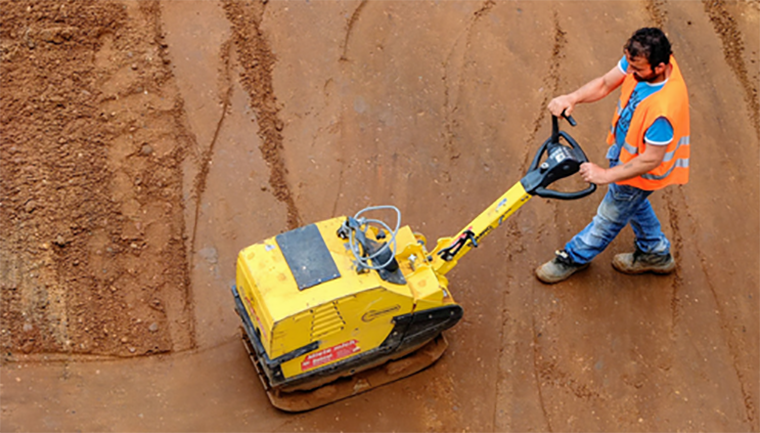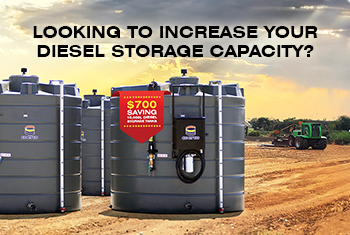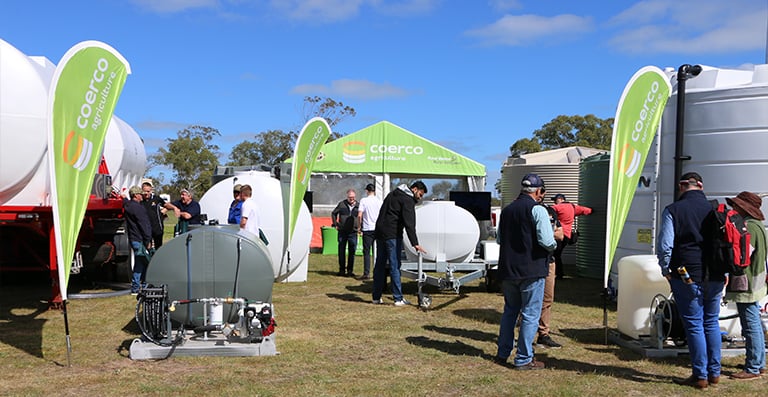Site preparation is vital for any load bearing structure, and a water tank will require a suitable foundation to help ensure that you have many years of trouble-free usage. There are two factors that will apply to any water tank installation.
Firstly, it must be placed on a level base that will not erode or subside over time. And secondly, there should be no sharp debris or rocks that could pierce the tank. Tank pad preparation will also depend on the construction material of the water tank that you choose.
Let's take a look at the tank pad preparation required for each type of tank:
Poly Tanks
One of the most popular choices, poly tanks, are lightweight, UV resistant and extremely durable. They are constructed as a single unit with no seams, and very robust, with install often done by pushing these tanks off a delivery truck onto a level, compacted pad being all that is required. Providing the tank overflow is piped away from the tank there is very little chance that anything will erode the base.
.png?width=495&name=Untitled%20design%20(15).png)
Poly tanks are the most simple type of tank to install with the least amount of machinery if any machinery at all. They are the most for giving both during installation and throughout their lifetime of use.
The most common bases are compacted sand, gravel or crusher dust. The main thing to make sure is that there are no large rocks or sticks that could push up under the tank when it is full of water. The most secure foundation is a concrete pad that is 75-100mm (3-4") thick. The base should extend out at least 300mm (12") beyond the tank on all sides so that any runoff from the roof doesn't run down the walls and erode under the tank base.
Related article:
An In-Depth Guide to Preparing the Ideal Base for Your Rainwater Tank
Fibreglass Tanks
The requirements for a foundation are similar to those for poly tanks. However, since fibreglass is often thinner than poly and not flexible, it is important the base material has no soft spots.
For example, if a fibreglass tank is installed on a sand pad that has soft spots, there is a risk of cracking because fibreglass is more rigid and not as flexible as poly.This material requires a food-grade coating when used as a water tank.
Since fibreglass is not UV resistant, fibreglass water tanks also need to have a coating to block sunlight and prevent algae from growing in the water. This means that if a base for a fibreglass tank isn't prepared properly it can create a series of problems that can be costly to repair.
Download this Free Report

Steel Liner Tanks
Galvanised steel has traditionally been used for water tanks and are lined internally with a food-grade polymer. Galvanised steel liner tanks are still susceptible to corrosion and often the thin polymer liner will need to be protected from sunlight.
Also because the liner is so thin it is very important that the pad and made from very clean sand or fill that has absolutely no rocks or debris that will pierce the thin liner. Transporting of this clean fill material is often an added cost that is overlooked when purchasing a steel liner tank.
Steel liner tanks can be sited on a 150mm (6") thick foundation of compacted sand, which should be at least 2m (6.5') wider than the diameter of the tank.
It's important to be precise when preparing this tank pad as they are installed in kit form which means its important to ensure levels are correct to make putting together the panels easier. Steel liner tanks are much more time consuming to install and difficult to adjust once put in place.
Concrete Tanks
Normally used for underground water storage, these are often poured on-site, although smaller tanks can be delivered as a single unit or in pre-fabricated sections. Note that concrete tanks are not simple to install. They require large, heavy-duty machinery to install correctly. These heavy-duty machines need not only stable ground near the install site, but also on all tracks leading to the install site to ensure delivery vehicles don't get bogged or roll over.
Naturally, concrete tanks are not suitable for every location. Depending on the soil type and size of the structure, a base of 100mm (4") Blue Rock, compacted to 104 Kpa may be a suitable foundation.
.png?width=558&name=Untitled%20design%20(16).png)
Australia has the highest water usage per capita in the world, according to the Department of the Environment and Energy. Water tanks help households reduce their water bills by managing their water usage, while farmers in WA may be able to receive rebates from the Farm Water Rebate Scheme.
When choosing a water tank, it's vital to consider what type of tank is best for the job, as well as where you will place it.
Related article: Water Tank Installation Cost and Preparation to Take Note Of









What do you think about this post?
Comments